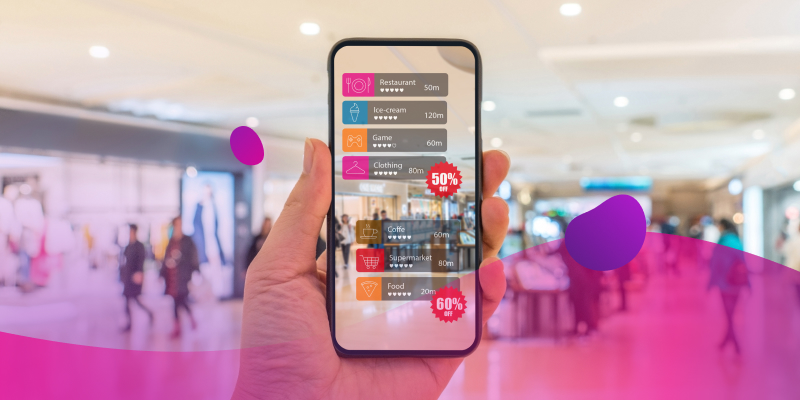There’s an art and science to guiding customers to convert—to take you up on that call to action, to click “add to cart,” or to go through with your demo request. Conversion rate optimization (CRO) is a tidy way to describe that science and art. By improving the customer journey, CRO can help you feel confident that your website or campaign doesn’t just attract visitors; it does the essential work of converting them into loyal customers.
Dynamic content is at the heart of this work. Delivering personalized, timely, and relevant experiences allows businesses to elevate engagement, boost conversions, and build stronger customer relationships.
The question is: Are you using dynamic content to its full potential?
What Is CRO and How Does Dynamic Content Enhance It?
CRO involves refining the user experience to increase the likelihood of actions you want, such as purchases, sign-ups, or clicks. Dynamic content can help boost these actions through personalized interactions that make users feel seen, understood, and valued.
You’ve likely experienced this in action, whether you were aware of it or not. Ever felt like an ad was speaking to you in a presciently perfect moment? Have you ever thought that a video or email seemed laser-targeted and wondered if it was magically meant for you?
Dynamic content helps you recreate that feel for your audience by remembering preferences, showcasing relevant items, and suggesting the right product or service at the exact right time.
5 Dynamic Content Tactics to Boost CRO
To optimize for conversions, your content needs to be more than static and one size fits all.
Here are five proven ways to leverage dynamic content and achieve better results.
1. Deliver extremely personalized recommendations.
Dynamic content allows you to suggest products or services tailored to each user’s unique behavior and preferences.
- For example, let’s say a returning shopper stopping by their favorite tech site sees accessories that conveniently complement their recent purchases, such as camera lenses for their new DSLR.
- What are the benefits? By offering seemingly coincidentally relevant suggestions, you create a seamless shopping experience that keeps users engaged and drives additional purchases.
2. Segment your content by audience.
Cater to specific audience groups by tailoring content based on factors such as location, demographics, or device type.
- For example, a savvy retailer highlights winter gear for users in colder regions … while simultaneously showcasing summer apparel to those in warmer climates.
- What are the benefits? Segmentation can help you know that your message resonates with your users. This upgrade in relevance should result in improved engagement.
3. Engage your users with high-quality, interactive content.
Quizzes, calculators, polls, and chatbots are powerful tools for drawing users in and keeping them engaged.
- For example, once landing on your well-designed site, your skincare quiz recommends personalized routines for intrigued users—increasing on-site time and driving product interest.
- What are the benefits? Buzzy, thoughtfully implemented interactive content delivers value to users while building trust and encouraging action.
4. Optimize your content with multivariate testing.
Experiment with content variations to determine what resonates most with your audience.
- For example, consider testing two or more headlines, subject lines, CTAs, images, or preview texts for an email campaign to see which variants drive more opens.
- What are the benefits? Investing in this type of experimentation helps you identify top-performing elements. Once you have this information, you can act on it to ensure every piece of content you promote is as effective as possible.
5. Implement real-time personalization.
Leverage real-time data—such as weather, browsing behavior, or local events—to make your content timely and relevant.
- For example, promote rain gear to users in areas experiencing a storm and add a sense of urgency with a sleek mention of same-day shipping.
- What are the benefits? Real-time personalization creates moments that feel immediate and essential, driving higher conversions.
How to Get Started with Dynamic Content for CRO
Here’s how to lay the groundwork for a successful dynamic content strategy.
- Start by focusing on data collection and strategic segmentation. Your data needs to be clean, organized, and actionable before you see benefits—so begin by activating it appropriately. Then, invest in tools that allow you to segment users effectively based on both static and real-time data.
- Test a lot, and test as you go. Begin with a few dynamic elements, such as personalized recommendations or AI-powered product carousels, and use multivariate testing to refine your approach. You have a limited amount of exposure to your audience, so don’t risk wasting it with subpar content.
- Keep an eye on your analytics. Regularly analyze metrics like click-through rates, site-side engagement and conversions to assess the impact of your dynamic content. Use these insights to adapt and improve so you can ensure your strategy evolves with your audience.
By delivering tailored, engaging experiences, you can transform passive browsers into loyal customers, drive meaningful engagement, and boost your bottom line.
Are you ready to unlock the full potential of dynamic content?
Discover more strategies in our webinar, “The Dynamic Content Opportunity.”





